Kombucha
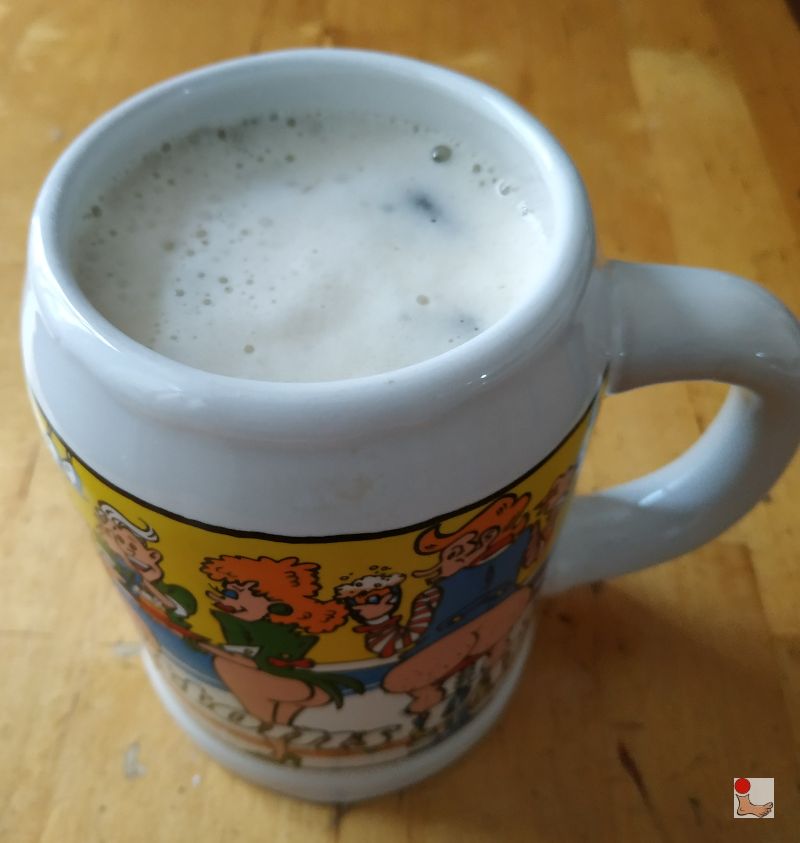
It is great to enjoy a cup of ice-cold, naturally sparkling, home-made Kombucha.
When the Kombucha in the Fermentation Jar is “ready”, i.e. it has the right sweetness/acidity to drink it, we usually call the “Kombucha Bar open”, what means that everybody in the family can grap a glass or cup and add ice and fill it up with Kombucha, 1st Fermentation. This has already all the probiotic benefits and we like the taste of it even without special fermentation/add-ons in a 2nd fermentation.
In the first years we did regularly experiment and like the various tastes and flavours we could generate with a 2nd Fermentation, like “Cinnamon-Apple”, “Pineapple”, “Mango”, “Lychee”, “Lemon/Ginger” and so forth.
Meanwhile we reached a point where we just add some fresh Mint or Lemon Borrage when we bottle the 1st Fermentation, and don’t go for a special 2nd round, we just drink it like that.
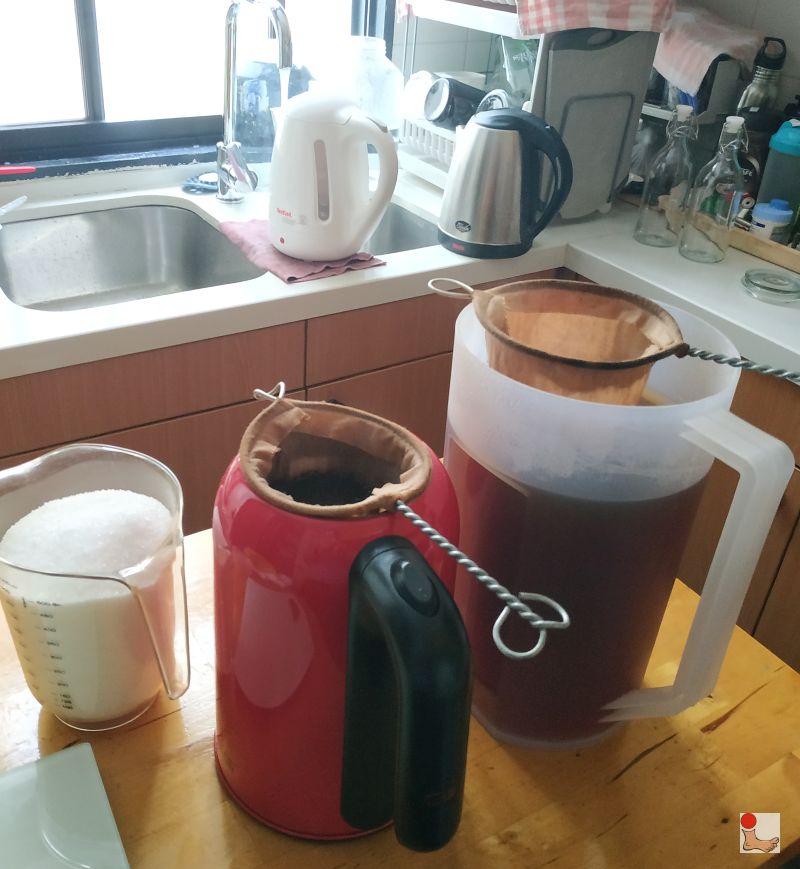
Sweet Tea … the Basic Material
Here you see me making the “sweet tea”, of either black tea or green tea (or a mixture). I have tried lots of different tea types.
The red can is for the “tea concentrate” for the 8 liter Fermentation Jar and on the right side, the 4 liter jar is for the “tea concentrate” for the 20 liter Fermentation Jar.
The used tea leafs I use in my herb plant pots for soil enhancement.
There is lots of different information out on the Internet about making Kombucha. Some are plain nonsense, some are quite good. Over the years I have developed “my own way” to make Kombucha and it is very successful.
The 3 Fermentation Jars
Here you see the three main fermentation jars. The left is the 8 liter, in between is the Scoby Hotel, and at the right side is the 20 liter fermentation jar.
Next to the 8 liter jar is a small glass, this contains a bit Kombucha with a drop of diswashing detergent to catch fruit flies.
This is a rare case that I did not fill the jars completely. As you can see, I change the usual plastic facets with stainless steel valves on the jars.
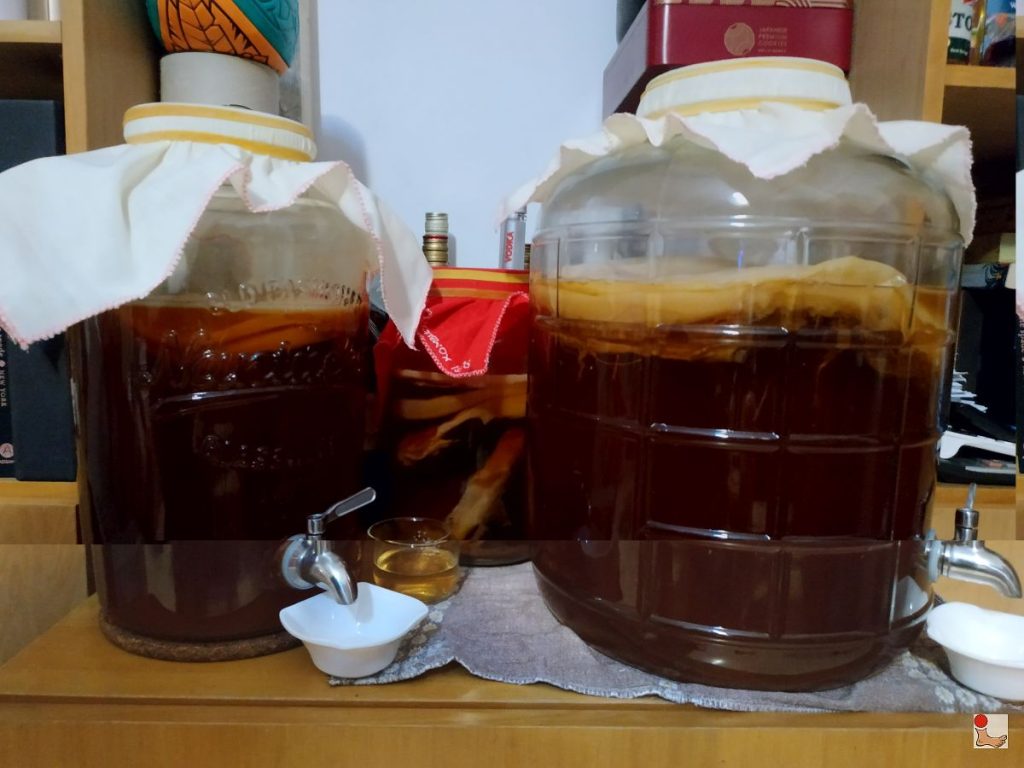
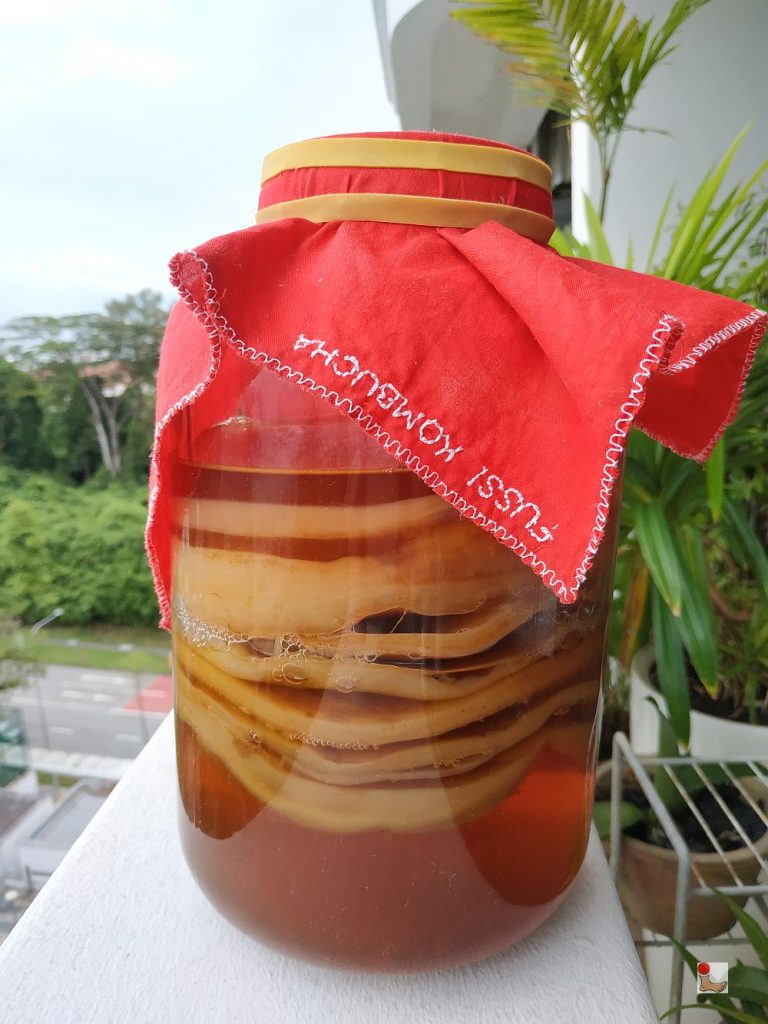
The Scoby Hotel
The Scoby Hotel is a kind of “Backup Jar” where over time, several layers of Pellicle (the top layer) build up. The liquid is like vinegar and I keep such in the fridge for Salad use, and I label such bottles with “Kombucha Vinegar”. In case of a failure of any of the other jars, I can re-start the Kombucha making with a layer from the Scoby Hotel and a cup of the liquid from it.
Most often the reason for a failure is, that mold came into the culture. If mold is inside (you see grey/black areas on the top), I need to throw out all inside, thoroughly clean it, and restart the fermentation again.
I only needed to buy the “culture” once, and that was back in 2017 already, since then I maintain my own.
2nd Fermentation
At our climate, the first, primary fermentation, takes usually 7 to 8 days. Then we used to add the flavour for the 2nd fermentation. Here in this example you see Lemon added.
The 2nd fermentation I do no more than 3 days, then the bottles go into the fridge.
We did a lot of experiments with various fruits (raw fruit blended), cinnamon, cloves, all kinds of herbs and tastes I found in our kitchen.
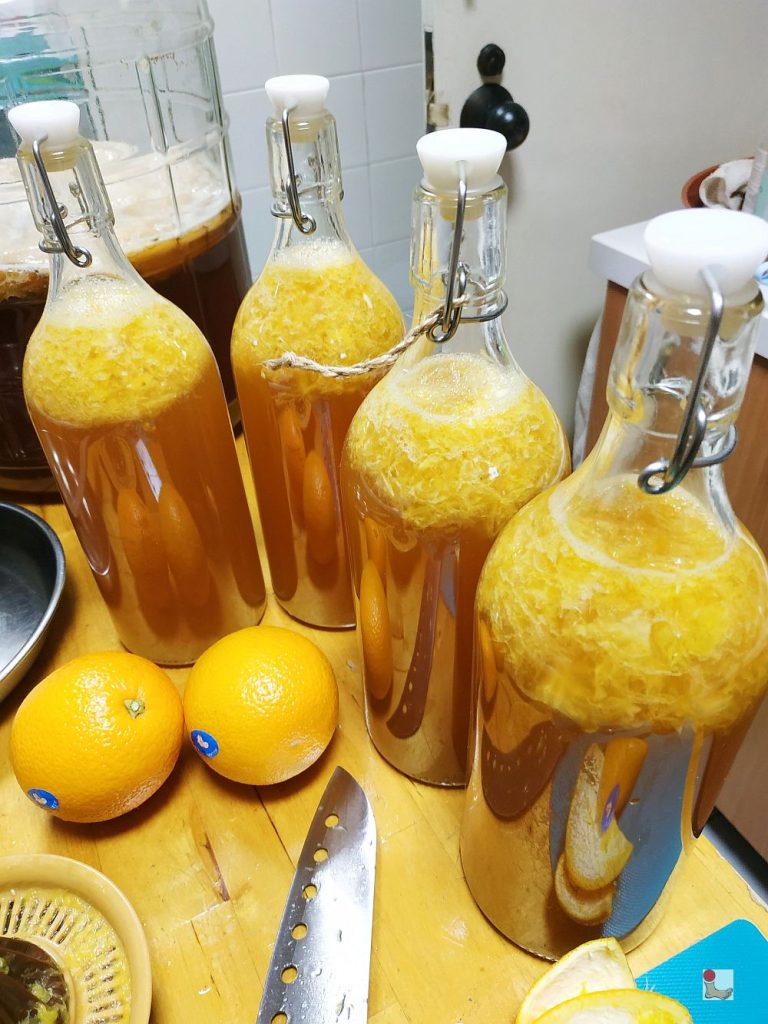
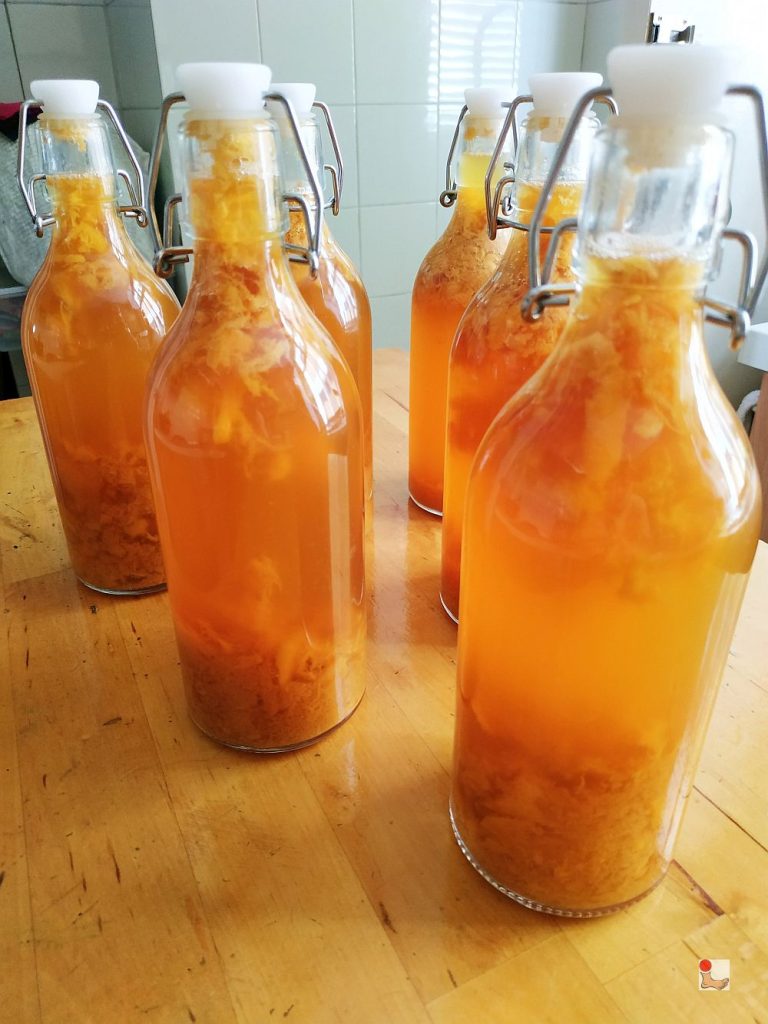
Various Flavours and and Tastes
Here you can see fresh ripe Mango made to pouree with a blender, or small cut. Mango Kombucha tastes very nice, specially when the fruits are very ripe.
Other fruits like Pineapple cause the fermentation to be very gassy. But also a mixture of cinnamon/apple and gloves is nice. There are no limits of creativity someone can have when creating a 2nd fermentation taste/flavour.
Better Safe than Sorry
We had a few cases where bottles “exploded” during the 2nd fermentation. In such case, the bottle bottom blows off and the top part flies off like a rocket. To care for this, we put the bottles during the 2nd fermentation in a big plastic container, which we cover with a towel. In this case, no big mess during an “explosion” as the container contains the liquid and the towel on top catches the flying glass.
Meanwhile we have no more issues as we don’t do much 2nd fermentation any more, just consume the first fermentation, and if we do it, we know what fruits are “dangerous” and we limit the added sugar and the time for the 2nd fermentation accordingly.
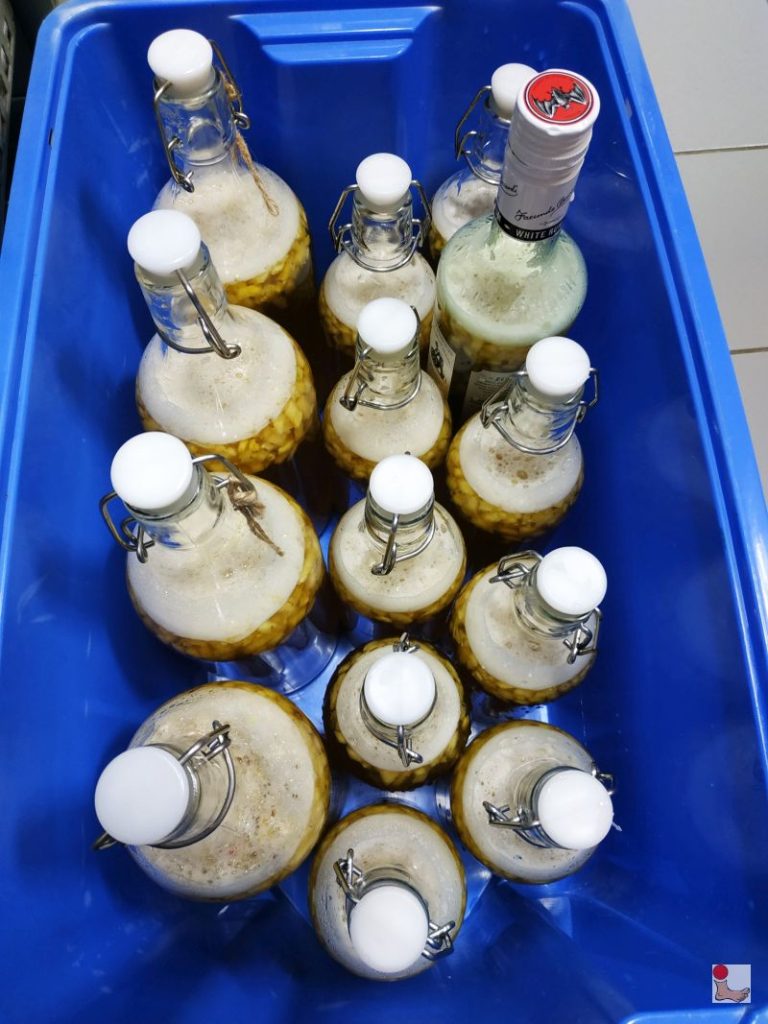
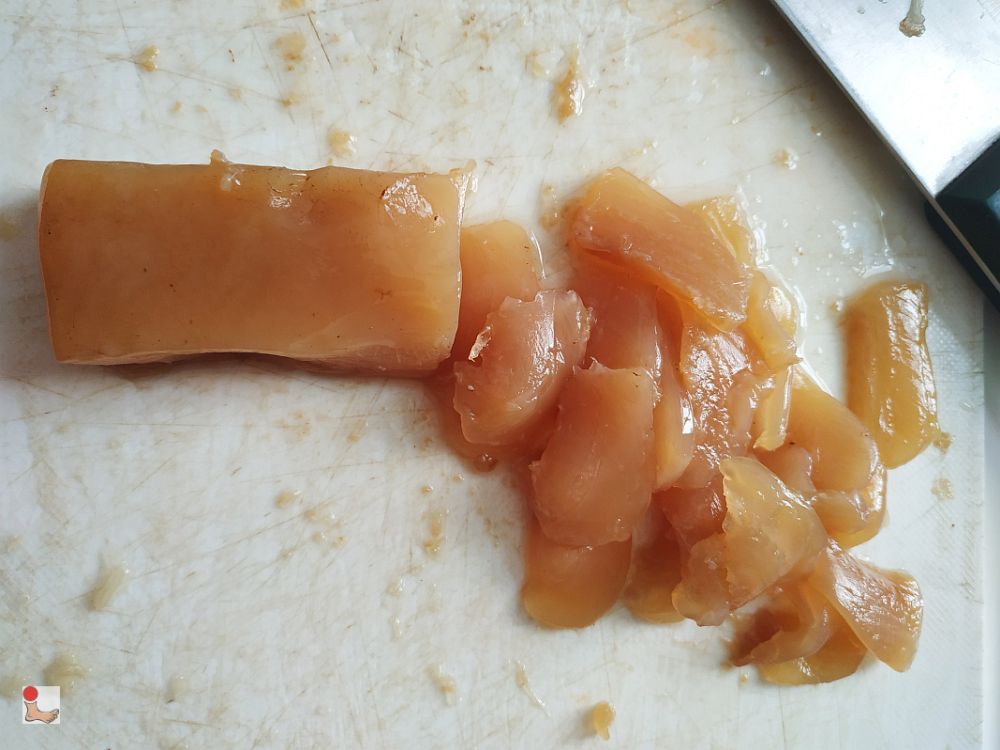
Home made Chicken Meat
From the texture and look, you could well mean that this is real Chicken Meat.
This is the Pellicle that forms on top of the Kombucha over time, and in the 20 liter jar, it can be quite enormous.
Here you see when I cut some up, as I do eat this also raw.
I also found a way to consume it, by blending it and add a bit of cinnamon and a bit of honey to the blend, and it makes a great desert. If you don’t tell, people would never know that this is the pellicle of a Kombucha.
Over time – Keep it Simple
As mentioned, over time we keep it more simple, as we are keen on benefitting from the probiotics and health benefits of Kombucha a primary concern.
This is how we prepared to bring along for the New Years Eve Dinner. Just 1st Fermentation bottled with whatever we have on our balcony garden (right side is Lemon Borrage, middle is Mint, left is Marjoram). We add this herbs and keep the bottles a few days in the fridge so the flavour goes into the Kombucha. It tastes nice and we like it.
We have daily at least 1 glass of Kombucha each.
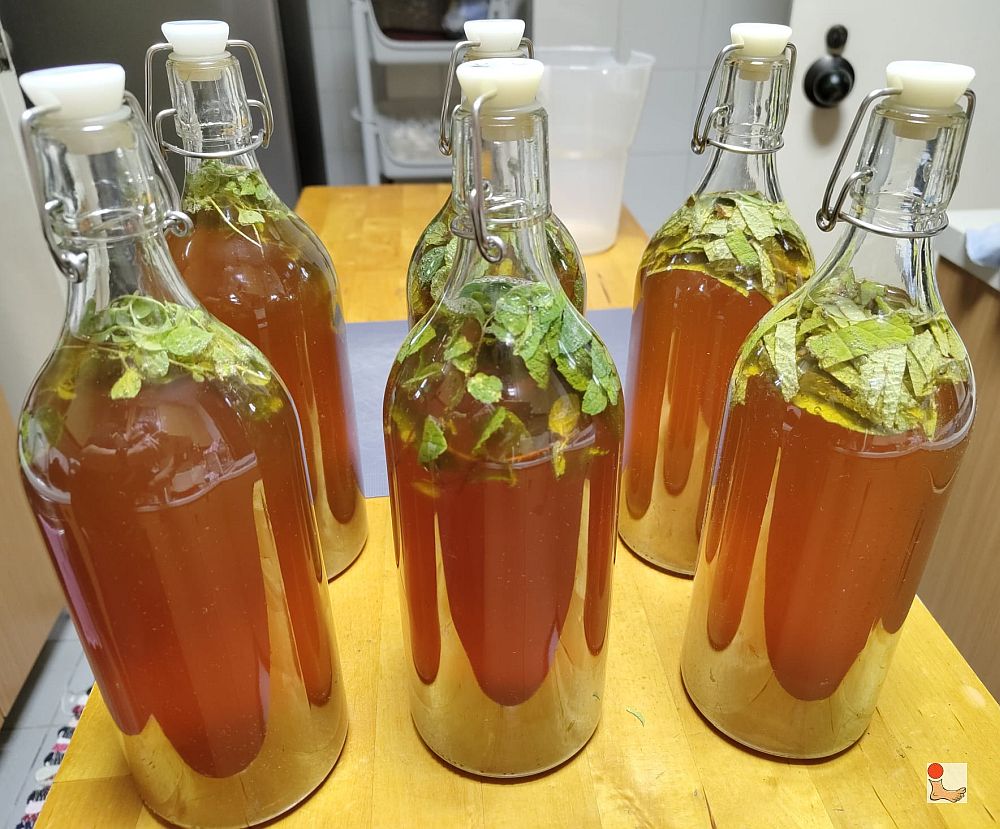

Idling Jars … as simple as that
The Internet has to be consulted with care, a lot of things are plain nonsense. I have friends who keep the Scoby and Pellicle in the fridge if they don’t use them. That is not necessary.
I can tell you, I keep the Kombucha fermentation jars in a condition like on this picture for weeks without any problems (at our tropical climate).
Important is that there is always enough liquid inside to keep the pellicle wet (I add every 3 weeks a cup of sweet tea, if I don’t use the jars for more than a month, as it tends to evaporate and getting less).
Secondly it is important that the cover is always intact.
My “Fridge for Ferments”
As mentioned, I do have a 480 liter Fridge that contains only fermented things.
What is not Kombucha, is Sauerkraut or fermented Vegetables or Starter Liquids for fermentation.
Some items like fermented Garlic I can keep outside the fridge for months and it is fine as long as it is inside the acid brine.
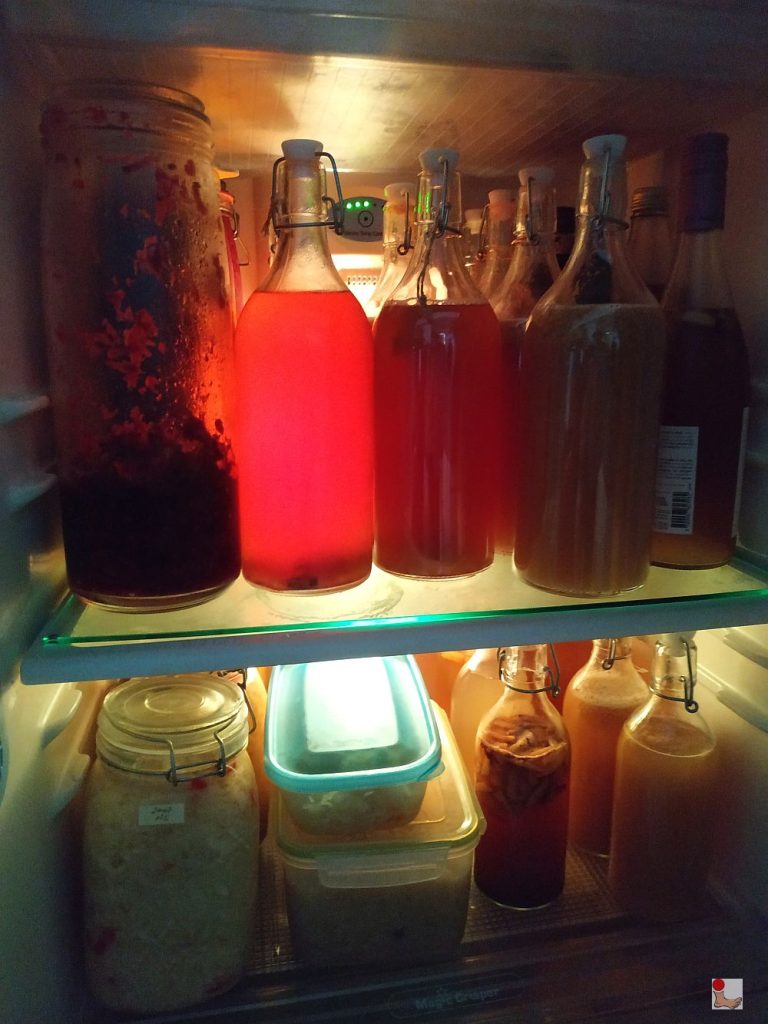
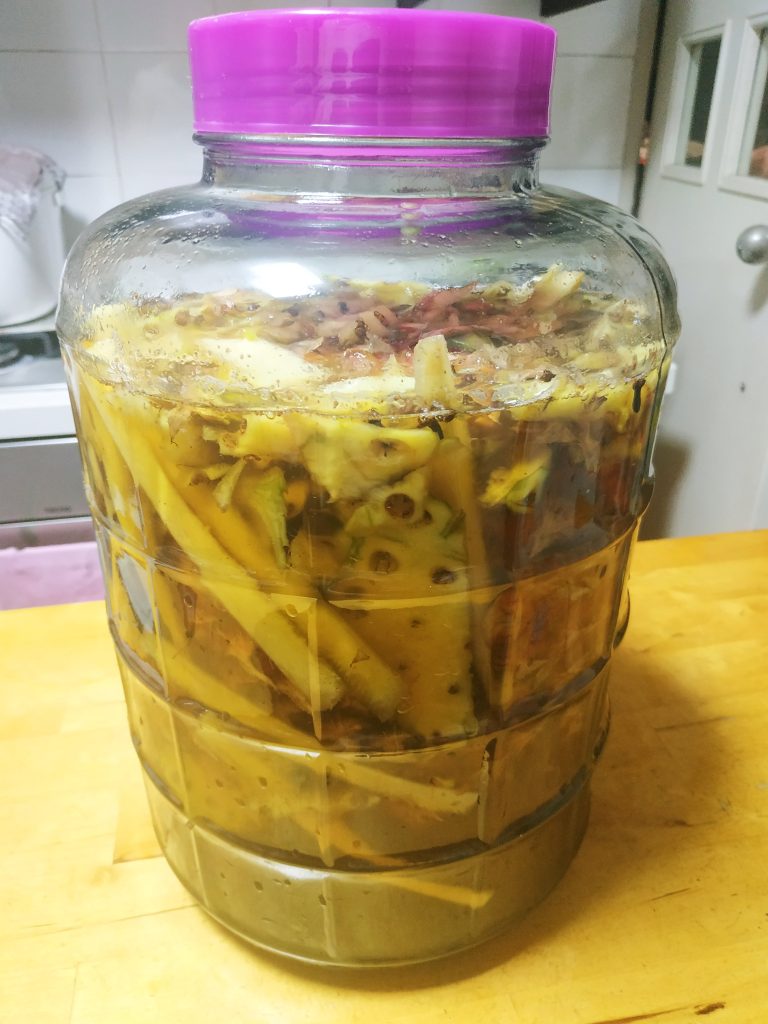
A Stray-Dog … Tepache
When the idea of a “Pineapple Edition” of Sauerkraut was born, there was a lot of “leftovers” from the 4 to 6 fresh pineapples that I used for a Sauerkraut batch.
So I started to make Tepache. The first time, I have to admit, I was too much thinking “Kombucha” and the Tepache was very sour, as for this ferment 1 day more or less makes already a big difference in the outcome. The second time I knew, Tepache is finished in 3 days to go into the fridge. I love this drink, with it’s nice pineapple/cinnamon/clove aroma. A great use of scraps, nothing needs to go to waste, everything can be used somehow.
Since we make Kombucha, and that is now already about 7 years, we safe a lot due to this. You find a clip about Kombucha in the Nutrition Section of this WebSite.
When we talk about Kombucha, some concern is “what about the much sugar”. I set off with a sugar concentration of about 9%, and the end-product I can decide myself how sweet or sour I like to have it. I measure the Sugare Content with the Taste Buds in my mouth or a Refractometer. And just recently I measured 5 to 6% of Sugar. Now, tell me, how much does an average Soft Drink have? Is it 30% or is your 2 teaspon of Sugar in your tea or coffee really less? After I ask this way, the subject of a discussion changes.
By the way, the Sugar for the Kombucha is not in our Kitchen, it is in special boxes with all the items for Kombucha Making, outside the Kitchen (for those who read what is “not” in my kitchen).
If you have any questions or comments, please make use of the About us form on the second page.


